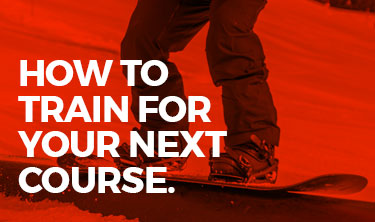So, you’ve decided to tackle another certification level – maybe it’s the Park 1 or 2 course, or Level 2 instructor, or even Level 3!
Training for your next level of certification can be a little overwhelming at first glance. By breaking down the process into smaller chunks you can chip away to make consistent improvements to both your teaching and riding. With a little focused effort, you’ll reach your goals more quickly and hopefully have a little fun while doing it.
Below are some guidelines to help you improve your teaching and riding.
Teaching:
- Review material in the manual, course guide and standards video.
- Make notes on paper, writing helps improve information retention and recall
- Consider your students and possible lesson goals. There are plenty of imaginary students to analyze on the slopes.
- Plan some lessons on paper using the sample lesson templates provided in the course guide. Check for structure and method of presentation outlined in course guide. Remember to keep it concise, you should be able to give both a simple explanation and a more detailed explanation. Try to separate the need to know info from the good to know info.
- Test your lessons on snow with fellow instructors or students. Keep your practice sessions short, go through a couple training cycles and work in a conclusion.
- Reflect on your lessons and revise where needed. Use the evaluation tools provided in the course guide to determine what was done well and areas for improvement.
Riding:
- Review material in the manual, course guide and standards video
- Assess your riding, plan to build on your strengths to help improve your weaknesses.
- Focus on the fundamentals, finesse your flaws, find your fun. Build strong foundations to help ensure you’re able to improve where needed. When the stress of training and expectations starts to creep in; turn your brain off and go have some fun.
- Be sure to familiarize yourself with the mandatory maneuvers and the tactics or exercises, outlined in the course guide. Try to think about how each exercise might relate to the various skills. If you’re unsure, reach out to fellow instructors, tech team members or regional coordinators.
- Ride at different speeds, in different terrain, with different people. It’s easy to get lock in a rut doing the same things, by mixing it up you’ll encourage yourself to make changes.
- Put in some time to build fitness so that you can ride full days for the entire course. Once you fatigue it’s difficult to improve skills at the required riding intensity. On a similar note, make sure you also take some time to rest and recover each week to prevent burnout
- Aim to have your riding at the riding standard on any given day, not just on the good days.
- Improving your riding requires regularly challenging yourself. Each time you ride you should plan to have some small failures mixed with lots of small wins.
Most importantly, be sure to have fun out there! After all, it’s only snowboarding….
John Smits
Regional Coordinator (Alberta / BC East)
